What does Japanese cabbage look like and how to grow it?
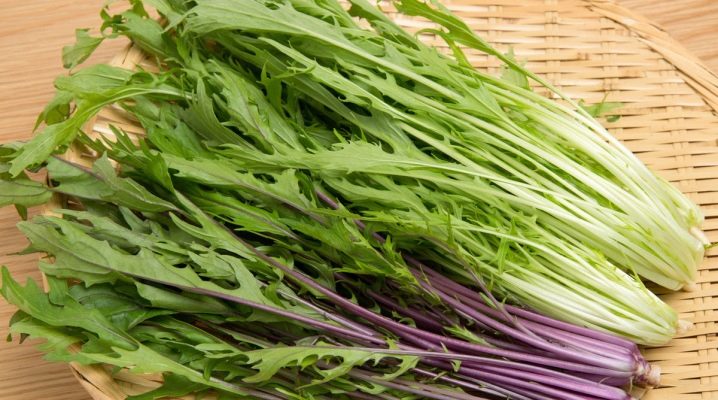
Japanese cabbage in our country is considered exotic, nevertheless, more and more summer residents are beginning to grow it on their plots. The reasons for this are an impressive set of useful macro- and microelements, as well as the unpretentiousness of the culture and the ease of its cultivation. In addition, Japanese cabbage can become a real decoration of a garden plot.
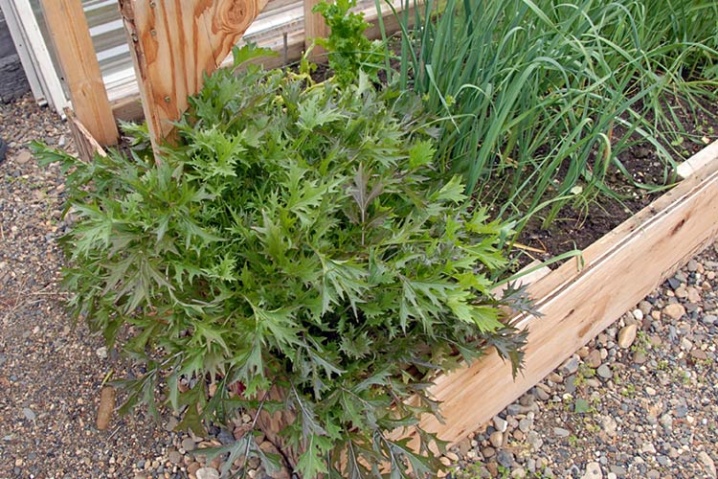
general description
In our country, Japanese cabbage is rarely grown. But on the shores of the Pacific Ocean, it is considered a traditional vegetable. Botanists find it difficult to reliably say which country is considered the birthplace of this culture: China or Japan. In any case, it got its name from the latter.
Japanese cabbage is a one or two year old plant. It grows up to 40-50 cm, while forming a leaf rosette up to 80 cm in diameter. The leaves are large, 40-60 cm long. They can be dissected or lanceolate.
A distinctive feature of this plant is that after cutting, the leaves grow back very quickly.
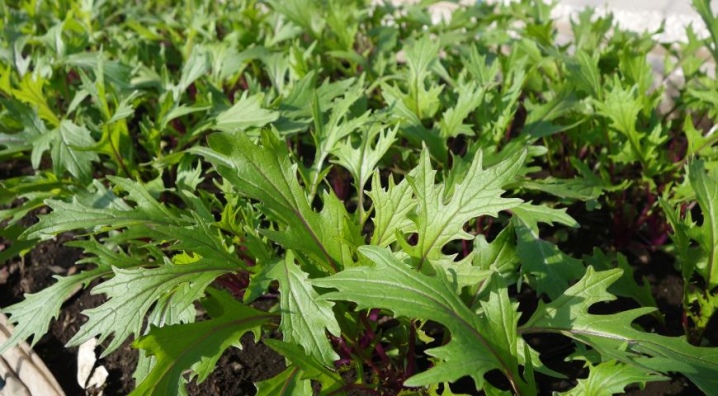
Despite the fact that this culture is called cabbage, it does not form a head of cabbage. During the growing season, root crops with a diameter of 10–15 cm grow, and in their taste characteristics they resemble rutabagas.
Japanese cabbage is frost-resistant - seeds germinate even at temperatures of -1-2 ° C. The culture easily tolerates spring and autumn frosts, thanks to which it can be grown in a variety of natural and climatic zones.
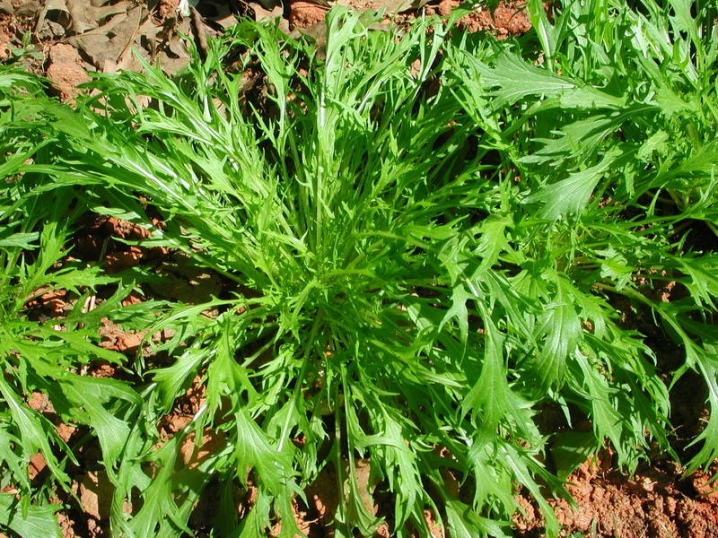
In terms of its chemical composition, Japanese cabbage is as close as possible to the Chinese and Peking varieties.
Although the Japanese woman has a much lower content of mustard oils, so she has a softer and more pleasant taste. This property determines its popularity in the preparation of dietary rations for people suffering from pathologies of the cardiovascular system and gastrointestinal tract.
Leaves are eaten. They are put in sandwiches, salads, snacks. Slightly less often they are subjected to heat treatment, added to the first and second courses.
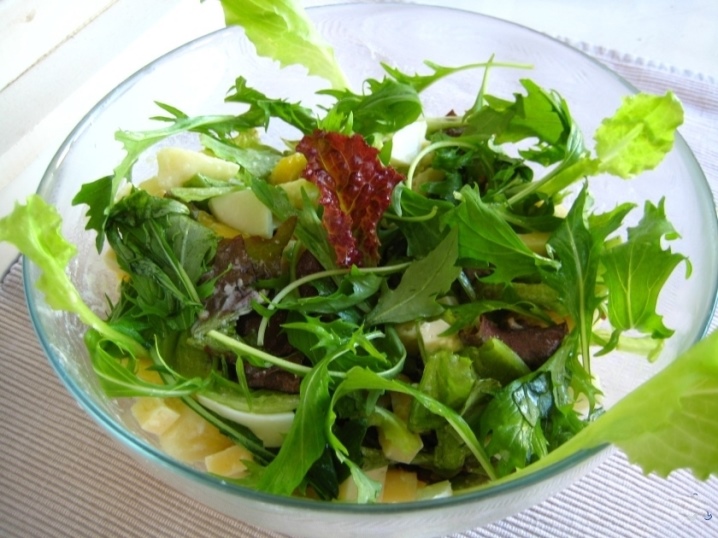
Overview of species and varieties
Among the most popular salad varieties grown in the territory of our country, the following can be distinguished.
- Mizuna (Mitsuna). It is distinguished by carved thin leaves. There are two varieties of this variety: "Green" and "Red". The leaves of the first have a bright emerald hue, while the second has a pronounced reddish tint. This cabbage is characterized by a high content of fiber and ascorbic acid. Compared to other types of Japanese cabbage, "Mizuna" is the most thermophilic.

- "Emerald Pattern"... A mid-early variety, came to the attention of our compatriots only in 2015, when it was included in the State Register. It grows up to 35 cm, the leaves form a rosette up to 60 cm in diameter. The leaf plates are pinnate, with jagged edges. The color is green, both sides are covered with a light waxy coating. The advantages of this variety of Japanese cabbage include a light green apple aroma. This is one of the most productive varieties. From each square meter of the planting area, you can get up to 5 kg of the crop.

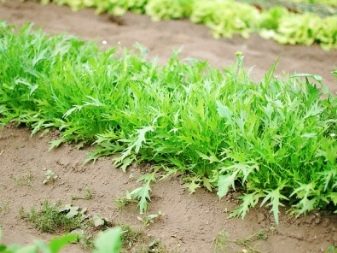
- "Mermaid" - mid-season variety: 60–70 days pass from germination to full maturity. Height - 35–40 cm, slightly raised rosette, includes 45–60 leaves, diameter - up to 70 cm. Leaves are pinnate, incised along the edges. The surface can be smooth or slightly wrinkled. The color is rich green, the petiole is white.The Little Mermaid cabbage is distinguished by its exceptional taste characteristics and high yield: from one square meter of planting it will be possible to harvest 5–6 kg. It can be grown from early spring to late autumn, shows resistance to flowering.
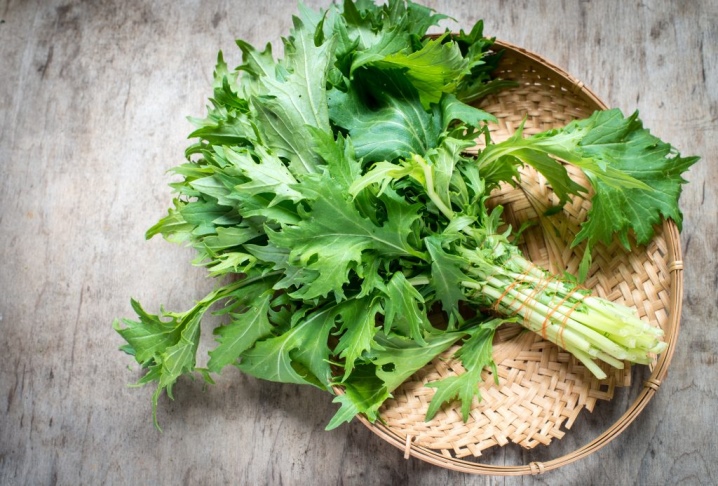
- "Dude" - ultra-early ripening variety: only a month passes from the emergence of seedlings to the cutting of leaves. Can be grown both in open ground and in a greenhouse. The weight of one plant is 400–500 g, the yield is 5–6 kg / sq. m. After pruning, the leaves grow back very soon.
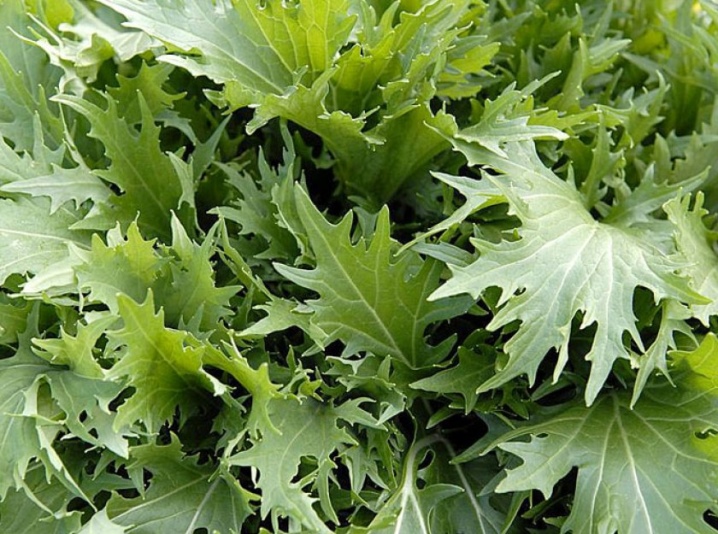
- "Mibuna" Is a less popular type of Japanese cabbage. It has long, whole, lanceolate leaves.
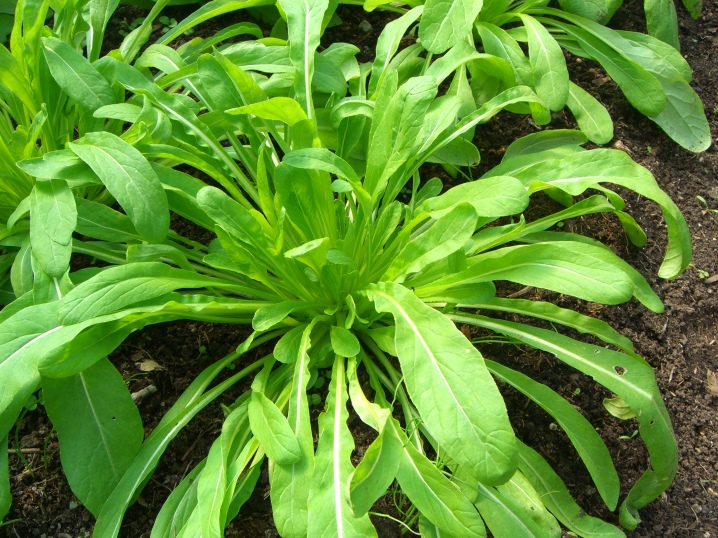
Landing
It is best to grow Japanese cabbage in an area with full sun throughout the day. Like all other types of cabbage, this variety does not like even light shading. The plant develops best on loams with an acidity of 6-7 units.
The key point of cultivation is compliance with the rules of crop rotation.... Potatoes, legumes and grains are good precursors. Plots after radish, turnip and radish, on the other hand, are not recommended. The crop can be planted on the same plot no earlier than 3 years later. If the area is limited and it is not possible to choose another place, then green manures should be planted immediately after harvesting.
Japanese cabbage prefers well-drained, aerated, and moisture-consuming soil.
She loves nutritious substrates, so the soil must be fertilized with mineral and organic substances before planting. In the fall, mullein or bird droppings are introduced, in the spring before planting - humus and mineral fertilizers.
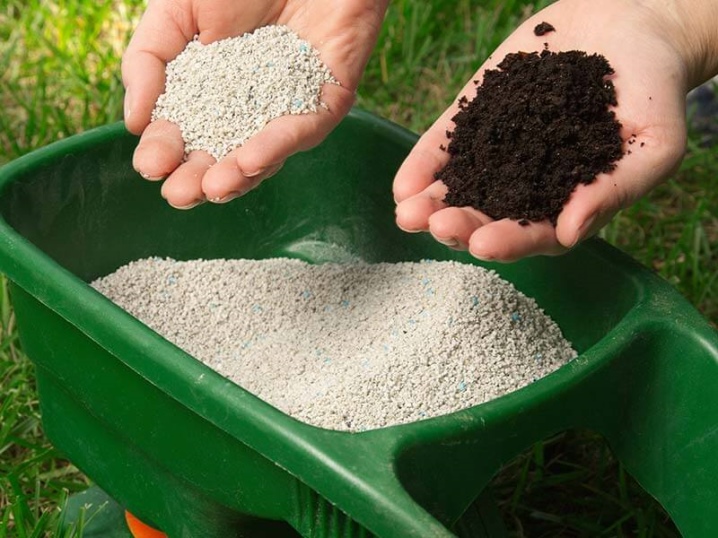
Japanese cabbage is grown by seeds or seedlings. Seedlings must undergo pre-sowing preparation before being introduced into the ground. It includes several steps.
- Sorting and calibration. At the first stage, a visual inspection of the seed is carried out and specimens with signs of rot and damage are discarded. All others are placed in saline solution for 10-15 minutes. Viable seeds will go to the bottom, those that float are empty, they will not sprout, so they can be thrown away.
- Disinfection... To prevent the development of fungal and viral diseases, it is advisable to keep the seedlings in a pale solution of potassium permanganate for about 10-15 minutes before planting.
- Activation... A good effect is obtained by soaking the seeds in a solution of "Epin", "Zircon" or any other growth stimulator. Lovers of folk methods can use honey or succinic acid. Such treatment helps to accelerate germination and improves plant immunity.
- If desired, you can soak the seeds. To do this, they are laid out on cheesecloth, covered from above and sprayed from a spray bottle. In this form, they are kept at a temperature of 20-24 degrees, keeping the fabric moist. As soon as the seeds hatch, you can move them into the ground.

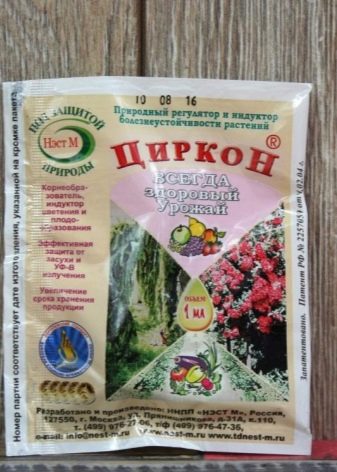
Seeds
The timing of planting Japanese cabbage with seeds directly depends on natural and climatic factors... In the central part of our country, it is best to do this in April or May. And in order to get a continuous harvest, the crop can be sown during all summer months with an interval of 10-14 days.
Cabbage seeds are small, so they do not need to be deeply buried. It is enough only to lightly press down into the ground. A distance of 10-15 cm is maintained between individual plants. If the planting is too thickened, then the risk of injury to the roots during subsequent thinning increases sharply.
Immediately after planting the seeds, the ground is watered and covered with foil. As soon as the first shoots come out, the shelter is removed.
Usually the first shoots appear after 8-12 days.
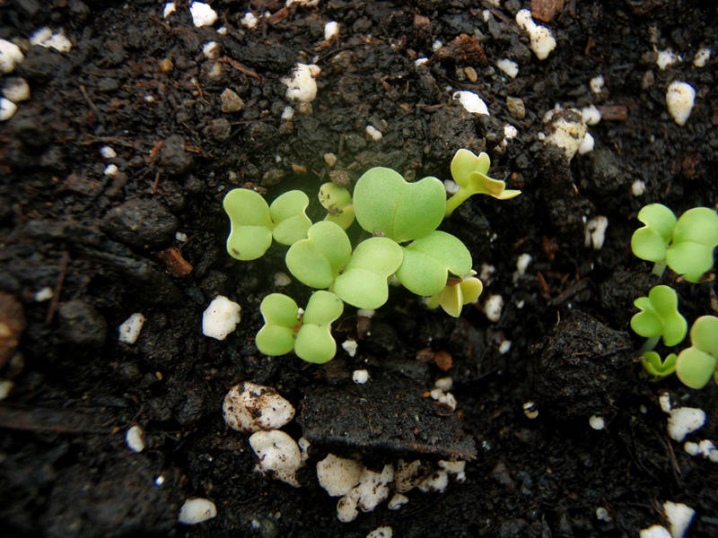
Seedlings
When growing Japanese cabbage in seedlings, it is very important to prepare the right soil mixture.The optimal soil can be purchased at any gardening store, but sometimes the purchased substrate does not meet the needs of an exotic culture. In this case, you can prepare it yourself; for this, organic and inorganic components are used.
- Organic soil includes turf, leaf and forest land, as well as compost, peat and rotted manure.
- Inorganic additives include sand, expanded clay, perlite and vermiculite.
When growing seedlings, seeds are planted in cups for a couple of seedlings in one container, buried 5 mm. At the age of 20-30 days, the seedlings are completely ready for transplanting into open ground. It must be kept on the windowsill from the east or south side at a temperature of 20-22 degrees. She does not need special care - just water as the earthen coma dries.

Before planting seedlings in the garden, you need to fertilize the soil... To do this, for each square meter of the sown area, 2 glasses of wood ash and half a bucket of humus are introduced, after which they carefully dig a shovel bayonet to the depth. If heavy clay soils are allocated for planting, it is necessary to first mix the earth with sand or rotted sawdust. Sandy, on the contrary, is mixed with clay.
When planting seedlings in the ground, an interval of 20-25 cm is observed. The row spacing should be about 30 cm.
As the seedlings develop, it is necessary to ensure that the ground does not dry out, otherwise there is a high risk of arrows.

Care
No special skills are required to get a bountiful harvest of Japanese cabbage. This is a rather unpretentious culture, so caring for it is not particularly difficult.... However, there are some conditions that are best adhered to. These include: proper irrigation, fertilization, weeding, loosening, disease prevention and treatment, and pest control. Let's dwell on each moment in more detail.
Water the Japanese cabbage sparingly, as the earthy coma dries out.... Excessive moisture can lead to decay of the root system. At the same time, the lack of irrigation can affect the plants in the most destructive way - they stop in development. Watering is carried out early in the morning or in the evening, when there are no scorching sun rays. Water is brought under the roots, the leaves do not need to be watered.
An obligatory stage of the agrotechnology of Japanese cabbage is mulching soil... This prevents moisture from evaporating while keeping the soil loose. In addition, weeds do not grow under the mulch. The best solution would be to use peat, sawdust or chopped straw.
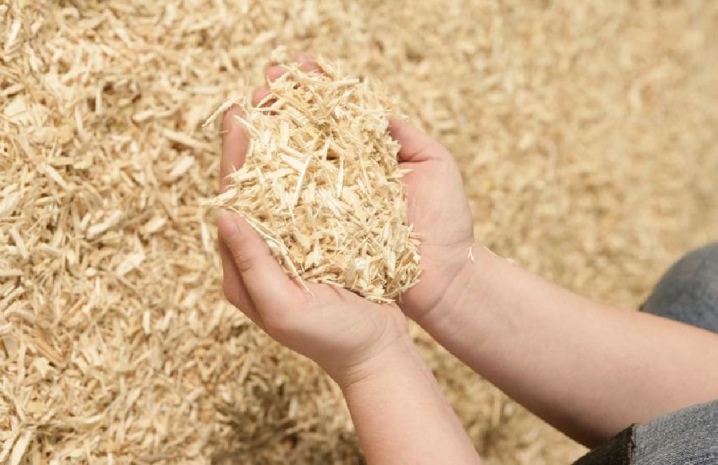
After each watering, especially in hot weather, a crust forms on the ground. It prevents oxygen from reaching the roots. To avoid this, it is necessary to regularly loosen, but only in those places where there is no mulch... Plays an important role weeding... Weeds take up the lion's share of micronutrients. As a result, the cultivated plant does not receive enough substances useful for its growth and development.
Fertilizers are applied every two weeks, with the emphasis on wood ash. It is added at the rate of 200-300 g / sq. m. Ash is rich in potassium and promotes the growth of green mass. But it is better to refrain from compositions containing nitrogen, as this causes the accumulation of nitrates in the leaves.
It is very important to adhere to pest and disease prevention measures. If it was not possible to prevent the attack, then it is necessary to immediately begin to fight it. So, against the cruciferous flea, cabbage fly and other insects, pollination with tobacco gives good results, as well as spraying with a decoction of garlic or tomato tops. It is not recommended to use chemicals, since in this case all harmful substances will accumulate in the leaves.
To fight fungal infections, plants are sprayed with a solution of biofungicides.

Harvesting and storage
Most varieties of Japanese cabbage can be harvested within 1–1.5 months after the first shoots appear. In this case, you can cut off both individual leaves and the whole bush. Please note that Japanese cabbage is stored for only a few days. To extend the time of its freshness, you will have to dig up the plant by the root.
In most cases, Japanese cabbage leaves are eaten raw. They can be dried or pickled if desired. The product is added to salads, first and second courses.
Today, the cultivation of Japanese cabbage is popular. This plant is a real storehouse of vitamins and minerals. In addition, it has excellent taste and high growth rate. And the decorative appearance of the culture allows it to be used to create beautiful green beds.














The comment was sent successfully.